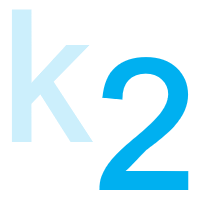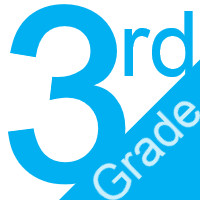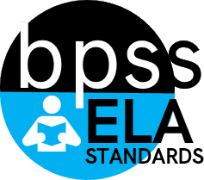3rd Grade English
 Standards Glossaries
Standards Glossaries
| K Grade English | 1st Grade English | 2nd Grade English |
 Standards Glossaries
Standards Glossaries
| 3rd Grade English | 4th Grade English | 5th Grade English |
 Standards Glossaries
Standards Glossaries
| 6th Grade English | 7th Grade English | 8th Grade English |
 Standards Glossaries
Standards Glossaries
| 9th Grade English | 10th Grade English | 11th Grade English | 12th Grade English |
 Standards Glossaries
Standards Glossaries
| HS Journalism | HS Speech |
| All categories |
PRIORITIZED STANDARDS |
|---|
ELA-03.L.02ELA-03.L.02 Demonstrate command of the conventions of standard English capitalization, punctuation, and spelling when writing.Sub-Standards:
Introduce:
a. Use commas and quotation marks in dialogue.
b. Form and use possessives. c. Add prefixes and suffixes to base words (e.g., sitting, smiled, cries, happiness). d. Use commas and quotation marks to mark direct speech and quotations from a text. e. Use a comma before a coordinating conjunction in a compound sentence. f. Use punctuation to separate items in a series. g. Use a comma to separate an introductory element from the rest of a sentence. h. Use a comma to set off the words yes and no (e.g., Yes, thank you), to set off a tag
question from the rest of the sentence (e.g., It’s true, isn’t it?) and to indicate direct
address (e.g., Is that you, Steve?).
i. Use underlining, quotation marks, or italics to indicate titles of works. j. Spell grade-appropriate words correctly, consulting references as needed and/or using spelling patterns and generalizations (e.g., word families, position-based spelling, syllable patterns, ending rules, meaningful word parts).
Display proficiency in:
k. Use commas in greetings and closings of letters.
l. Use an apostrophe to form contractions and frequently occurring possessives. m. Generalize learned spelling patterns when writing words (e.g., cage → badge; boy → boil). n. Use commas in addresses. o. Use conventional spelling for high-frequency and other studied words. | |
ELA-03.RFNarrative for the Reading Foundations Strand:The foundational skill standards are directed toward fostering students’ understanding and working knowledge of concepts of print, the alphabetic principle, and other basic conventions of the English writing system. These foundational skills are not an end in and of themselves; rather, they are necessary and important components of an effective, comprehensive reading program designed to develop proficient readers with the capacity to comprehend texts across a range of types and disciplines. Phonics: In third grade students work on developing strategies that enable them to decode multi-syllable words and irregularly spelled words. Third graders also learn to identify words with affixes (prefixes and suffixes) and learn that affixes have meanings and can change the meanings of words to which they are attached. Third grade students learn to recognize common prefixes and inflectional and derivational suffixes and can explain how these common prefixes and suffixes change the meaning of a word. For example, they can explain that the prefix –un means not in the word unhappy. Fluency: Fluency is defined as being able to read orally with a reasonable rate of speed, with a high degree of accuracy, and with the proper expression (prosody). Fluency is one of several critical factors necessary for reading comprehension.
How to help my child at home with the Foundational Skill Standards:
Resources
Calculation Method for StrandsStrands are larger groups of related standards. The Strand Grade is a calculation of all the related standards. Click on the standard name below each strand to access the learning targets and proficiency scales for each strand's related standards. | |
ELA-03.RF.03
ELA-03.RF.03 Know and apply grade-level phonics and word analysis skills in decoding words.Sub-Standards:
a. Identify and know the meaning of the most common prefixes and derivational suffixes.
b. Decode words with common Latin suffixes.
c. Decode multi-syllable words.
d. Read grade-appropriate irregularly spelled words. | |
ELA-03.RF.04ELA-04.RF.04 Read with sufficient accuracy and fluency to support comprehension.Sub-Standards:
a. Read grade level text with purpose and understanding.
b. Read grade level text orally with accuracy, appropriate rate, and expression on successive readings.
c. Use context to confirm or self-correct word recognition and understanding, rereading as necessary.
| |
ELA-03.RINarrative for Informational Reading Strand:Informational text is designed to communicate factual information rather than to tell a narrative. Much of our daily reading is linked with this genre. Common examples of informational text include: diaries, cookbooks, websites, informational picture storybooks, field guides, and how-to books.
An important reading comprehension skill is the ability to determine the relative importance and precise meanings of words, sentences, paragraphs, sections, and chapters. Readers must be able to make sense of the meanings of words within sentences and of sentences within paragraphs. When readers grasp the main ideas, they better understand the purpose of the details—which, in turn, further strengthens their understanding of those main ideas. Readers, then, link their understanding of individual paragraphs to comprehend sections and chapters. To feel successful across content areas students must read widely and deeply from among a broad range of high-quality, increasingly challenging informational texts. Through extensive reading of biographies and autobiographies; books about history, social studies, science, and the arts; technical texts, including directions, forms, and information displayed in graphs, charts, or maps; and digital sources on a range of topics students gain knowledge in various informational areas as well as familiarity with various text structures and elements. Continued work on reading comprehension standards will heighten student abilities to read more complex informational (nonfiction) text. Teachers use assessment and observation to determine if students are ready to progress to more challenging reading selections. Each child is unique, so be flexible, and trust your judgment as you assist your child. Together teachers and parents can help students make better choices when selecting books to read. Not all selections children read must be in the level suggested by assessment, these levels serve as a guideline. Sometimes high interest in a topic allows success in a more difficult text, and sometimes simple text is more inviting to our children, balance is important. Increasing the frequency of reading is the highest predictor of success at any grade level. Building a child’s confidence, through successful experiences with reading, will encourage that desire to read more. Developing successful, life-long readers is our ultimate goal.
How to Help Your Child At Home with the Informational Text Strand:
Resources
Calculation Method for StrandsStrands are larger groups of related standards. The Strand Grade is a calculation of all the related standards. Click on the standard name below each strand to access the learning targets and proficiency scales for each strand's related standards. | |
ELA-03.RI.01 | |
ELA-03.RI.02 | |
ELA-03.RLNarrative for Literature Strand:Reading literature (fiction) allows students to learn about other lives and times that relate to their own personal experiences. In this strand, students will ask and answer questions about key details (characters, setting, plot), along with retelling what they have read. Literature (fiction) helps readers learn important life lessons through the lives of the characters, comparing their own experiences with the experiences of the characters they read about. Reading literature (fiction) allows us to learn to appreciate the beauty of the language, and to be articulate speakers and writers. Before gaining deeper meanings, such as making logical inferences or drawing conclusions, readers must grasp the central details, characters, events, and ideas from the text. importance of analyzing details and content that may be presented in a variety of formats. By drawing on the central details and facts of the text, skilled readers draw logical inferences and conclusions, or extend the themes of the present text to other literary settings. Third grade students must read widely and deeply from among a broad range of high-quality, increasingly literary texts. Through extensive reading of stories, dramas, poems, and myths from diverse cultures and different time periods, students gain literary and cultural knowledge as well as familiarity with various text structures and elements. Continued work on reading comprehension standards will heighten student abilities to read more complex literature (fiction) text. Teachers use assessment and observation to determine if students are ready to progress to more challenging reading selections. Each child is unique, so be flexible, and trust your judgment as you assist your child. Together teachers and parents can help students make better choices when selecting books to read. Not all selections children read must be in the level suggested by assessment, these levels serve as a guideline. Sometimes high interest in a topic allows success in a more difficult text, and sometimes simple text is more inviting to our children, balance is important. Increasing the frequency of reading is the highest predictor of success at any grade level. Building a child’s confidence, through successful experiences with reading, will encourage that desire to read more. Developing successful, life-long readers is our ultimate goal.
How to Help Your Child At Home with the Literature Strand:
Resources:
Calculation Method for StrandsStrands are larger groups of related standards. The Strand Grade is a calculation of all the related standards. Click on the standard name below each strand to access the learning targets and proficiency scales for each strand's related standards. | |
ELA-03.RL.01 | |
ELA-03.RL.02
ELA-03.RL.02 Recount stories, including fables, folktales, and myths from diverse cultures to determine the central message, lesson, or moral and explain how it is conveyed through key details in the text. | |
ELA-03.SLNarrative for the Speaking and Listening StrandSpeaking and listening standards require students to develop a range of oral communication and interpersonal skills that facilitate various types of discussion and oral exchange. Students must learn to work together, express and listen carefully to ideas, and integrate information from various sources, (e.g., oral, visual, quantitative, and media). Students must also gain skills in evaluating what they hear, use various sources to support what they are communicating, and adapt their speech to the content and the task at hand.
How to help your child with the Speaking and Listening Standards:
ResourcesCalculation Method for StrandsStrands are larger groups of related standards. The Strand Grade is a calculation of all the related standards. Click on the standard name below each strand to access the learning targets and proficiency scales for each strand's related standards. | |
ELA-03.SL.01
ELA-03.SL.01 Engage effectively in a range of collaborative discussions, one-on-one, in groups, and teacher-led with diverse partners on grade 3 topics and texts, building on others’ ideas and expressing their own clearly.
a. Come to discussions prepared, having read or studied required material; explicitly draw on that preparation and other information known about the topic to explore ideas under discussion.
b. Follow agreed-upon rules for discussions (e.g., gaining the floor in respectful ways, listening to others with care, speaking one at a time about the topics and texts under discussion). c. Ask questions to check understanding of information presented, stay on topic, and link their comments to the remarks of others. d. Explain their own ideas and understanding in light of the discussion. | |
ELA-03.WNarrative for the Writing Strand:The Writing standards outline three primary types of text that students are expected to produce: opinion, informational, and narrative texts. Students are expected to produce each of these text types and to understand the purpose for each. When writing production is tightly integrated with purpose, the differentiation between text types will be increasingly evident. Similarly, as students’ sophistication and maturity with language, vocabulary, and syntax grow, they will be better equipped to write for a specific purpose.The writing standards focus on instruction that enables students to gain adequate mastery of a range of writing skills and applications. As students progress through the grade levels they should demonstrate increasing sophistication in all aspects of writing, from vocabulary and syntax to the development and organization of ideas. The content and source students address are of an increasingly demanding nature. As they advance through the grade levels, students are expected to meet each year’s grade-specific standards and retain or further develop skills and understandings mastered during the preceding grades. Students continue to learn and apply the rules of standard written English and to strengthen and expand their vocabulary, use of language, and organization of ideas. You will find the standards for these skills in the Language Strand.
How can I help my child at home with the writing strand standards?
ResourcesCalculation Method for StrandsStrands are larger groups of related standards. The Strand Grade is a calculation of all the related standards. Click on the standard name below each strand to access the learning targets and proficiency scales for each strand's related standards. | |
ELA-03.W.01ELA-03.W.01 Write opinion pieces on familiar topics or texts, supporting a point of view with reasons.Sub-Standards:
a. Introduce the topic or text they are writing about, state an opinion, and create an organizational structure that lists reasons.
b. Provide reasons that support the opinion.
c. Use transitional words and phrases (e.g., because, therefore, since, for example) to connect opinion and reasons.
d. Provide a concluding statement or section. | |
ELA-03.W.02ELA-03.W.02 Write informative/explanatory texts to examine a topic and convey ideas and information clearly.Sub-Standards:
a. Introduce a topic and group related information together; include illustrations when useful to aid in comprehension.
b. Develop the topic with facts, definitions, and details.
c. Use transitional words and phrases (e.g., also, another, and, more, but) to connect ideas within categories of information.
d. Provide a concluding statement or section. | |
ELA-03.W.03ELA-03.W.03 Write narratives to develop real or imagined experiences or events using effective technique, descriptive details, and clear event sequences.Sub-Standards:
a. Establish a situation and introduce a narrator and/or characters, organize an event sequence that unfolds naturally.
b. Use dialogue and descriptions of actions, thoughts, and feelings to develop experiences and events or show the response of characters to situations.
c. Use transitional words and phrases to signal event order.
d. Provide a sense of closure. | |
(L) LANGUAGE |
|---|
ELA-03.LNarrative for the Language Strand:As they move through formal schooling, students must gain control over the many conventions of standard English grammar, usage, and mechanics. They must also learn various ways to convey meaning effectively. Language standards include the rules of standard
written and spoken English as well as the use of language as craft and informed choice among alternatives. Third grade students gain control over proper use of pronouns, adjectives, adverbs, and other parts of speech, produce simple, compound, and complex sentences, and demonstrate command of the conventions of standard English capitalization, punctuation, and spelling when writing.
How to help your child with the standards in the Language Strand:
ResourcesCalculation Method for StrandsStrands are larger groups of related standards. The Strand Grade is a calculation of all the related standards. Click on the standard name below each strand to access the learning targets and proficiency scales for each strand's related standards. | |
ELA-03.L.01ELA-03.L.01 Demonstrate command of the conventions of standard English grammar and usage when writing or speaking.Sub-Standards:
Introduce:
a. Produce complex and compound-complex sentences.
b. Form and use the progressive (e.g., I was walking; I am walking; I will be walking) verb tenses. c. Form and use the perfect (e.g., I had walked; I have walked; I will walk) verb tenses. d. Use helping and modal auxiliaries (e.g., can, may, must) to convey various conditions. e. Form and use prepositional phrases.
Practice:
f. Ensure subject verb-agreement.
g. Produce compound sentences. h. Produce complete sentences, recognizing and correcting inappropriate fragments and run-ons. i. Use regular plural nouns orally by adding /s/ or /es/. j. Form and use regular and irregular plural nouns. k. Use abstract nouns (e.g., childhood). l. Use possessive nouns. m. Form and use regular and irregular verbs. n. Form and use comparative and superlative adjectives and choose between them depending on what is to be modified. o. Form and use comparative and superlative adverbs and choose between them depending on what is to be modified.
Display proficiency in:
p. Correctly use common homophones (e.g., to, too, two; there, their).
q. Use singular and plural nouns with matching verbs in basic sentence (simple subject/verb agreement). r. Use collective nouns. s. Form and use the past tense of frequently occurring irregular verbs. t. Use verbs to convey a sense of past, present, and future. u. Use reflexive pronouns (e.g., myself, ourselves). v. Use demonstratives (that, those, these, this) w. Use adverbs depending on what is to be modified. x. Use and explain interjections Student Learning Targets:Knowledge Targets
Reasoning Targets
Skills (Performance) Targets
Proficiency ScaleThe Student Will ...1 Beginning... with help, demonstrates a partial understanding of some of the simpler details and processes (Score 2.0 content) and some of the more complex ideas and processes (Score 3.0 content).Start 2 Developing... demonstrates no major errors or omissions regarding the simpler details and processes but exhibits major errors or omissions regarding the more complex ideas and processes (Score 3.0 content).Simple 3 Proficient“The Standard.”... demonstrates no major errors or omissions regarding any of the information and processes that were end of instruction expectations. Target 4 Advanced... demonstrates in-depth inferences and applications regarding more complex material that go beyond end of instruction expectations.Complex ResourcesVocabulary
Websites
| |||
ELA-03.L.02ELA-03.L.02 Demonstrate command of the conventions of standard English capitalization, punctuation, and spelling when writing.Sub-Standards:
Introduce:
a. Use commas and quotation marks in dialogue.
b. Form and use possessives. c. Add prefixes and suffixes to base words (e.g., sitting, smiled, cries, happiness). d. Use commas and quotation marks to mark direct speech and quotations from a text. e. Use a comma before a coordinating conjunction in a compound sentence. f. Use punctuation to separate items in a series. g. Use a comma to separate an introductory element from the rest of a sentence. h. Use a comma to set off the words yes and no (e.g., Yes, thank you), to set off a tag
question from the rest of the sentence (e.g., It’s true, isn’t it?) and to indicate direct
address (e.g., Is that you, Steve?).
i. Use underlining, quotation marks, or italics to indicate titles of works. j. Spell grade-appropriate words correctly, consulting references as needed and/or using spelling patterns and generalizations (e.g., word families, position-based spelling, syllable patterns, ending rules, meaningful word parts).
Display proficiency in:
k. Use commas in greetings and closings of letters.
l. Use an apostrophe to form contractions and frequently occurring possessives. m. Generalize learned spelling patterns when writing words (e.g., cage → badge; boy → boil). n. Use commas in addresses. o. Use conventional spelling for high-frequency and other studied words. | |



 Grade 3
Grade 3